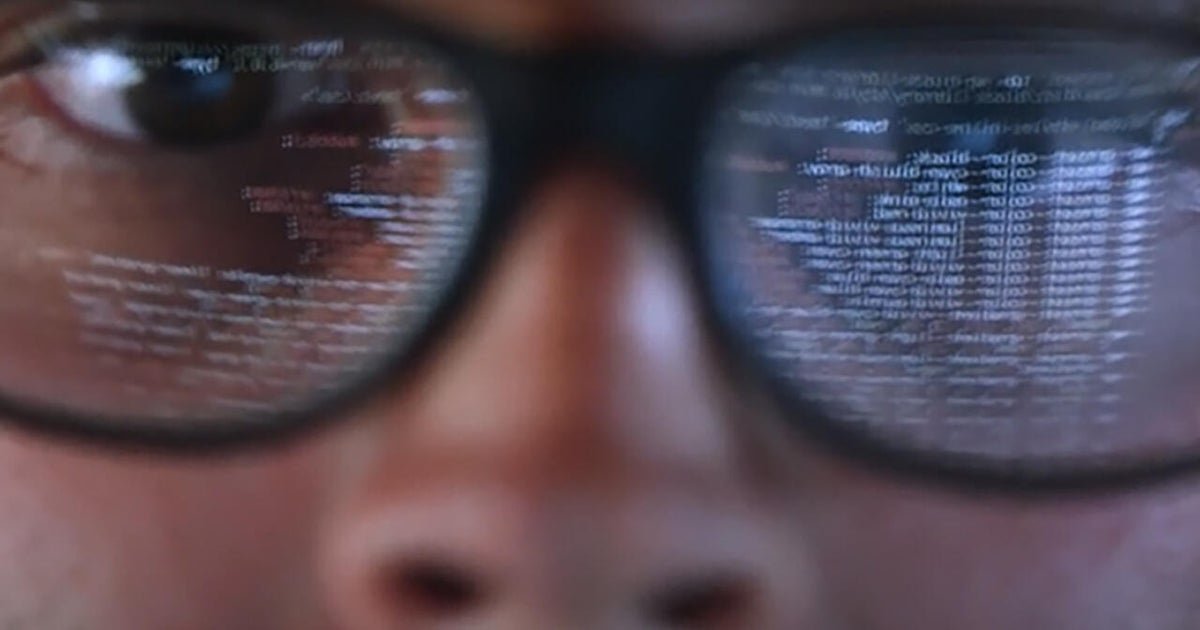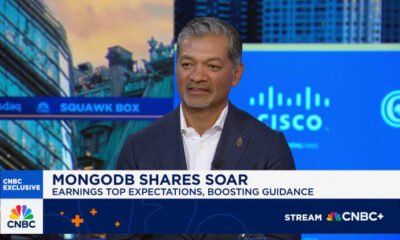AI Research
4 Artificial Intelligence Stocks (That Aren’t Nvidia) You Can Buy and Hold for the Next Decade
Key Points
-
Meta Platforms is leveraging its massive user base to develop and test new AI products, aiming to maintain its leadership in social media and capitalize on future growth.
-
Amazon is well positioned to benefit from the AI boom through the dominance of AWS.
-
Uber Technologies and Aurora Innovations are strategically positioned in the burgeoning autonomous vehicle market, each with its own approach.
While Nvidia is undoubtedly the dominant player in artificial intelligence (AI) and a smart investment, let’s consider a few other companies that stand to gain enormously from the advent of AI. While these companies occupy different places in the AI ecosystem, they are all incredible businesses that are investments that will pay off over the long term.
1. META: Unrivaled engagement
Meta Platforms‘ (NASDAQ: META) dominance in social media is unmatched. The company oversees several of the most-used apps in the world and commands the attention of over 3.4 billion daily active users worldwide. This already makes the company incredibly successful, pulling in nearly $165 billion last year in sales from which it made a profit of more than $62 billion.
Where to invest $1,000 right now? Our analyst team just revealed what they believe are the 10 best stocks to buy right now. Continue »
Not resting on its laurels, the company has been investing heavily in the future, especially in AI. This is where Meta’s user base will give the company an edge. It has ready access to incredible amounts of data as well as a direct pipeline to consumers ready to deploy its AI products and test them in the real world. And Meta can afford to keep investing even if it takes time to see a true return on its investment. Even after spending just shy of $40 billion in capital expenditures (capex), the company still had free cash flow (FCF) last year of over $36 billion.
2. AMZN: Cloud dominance
Amazon‘s (NASDAQ: AMZN) bread and butter, e-commerce, remains an absolute juggernaut incredibly difficult to displace. Amazon has built incredible brand loyalty, and the cost to try to replicate the back end makes it essentially a non-starter for a new entrant.
The company’s Amazon Web Service (AWS) is the most dominant cloud provider in the world, and with the influx of cash from companies racing to build more and more powerful AI models, it’s growing rapidly. AWS revenue jumped 17% year over year in the first quarter of 2025.
Speaking of the scale of the opportunity, CEO Andy Jassy recently drove home just how big he thought it could be, saying: “Before this generation of AI, we thought AWS had the chance to ultimately be a multi-hundred billion dollar revenue run rate business. We now think it could be even larger.”
Image source: Getty Images
3. AUR: Robotrucking leader
While a ton of focus has been on consumer-facing autonomous driving, autonomous trucking is a market with massive potential. Trucking is a massive industry, and labor costs involved in trucking are high; there is an obvious cost benefit for trucking companies to implement autonomous technology.
Aurora Innovations (NASDAQ: AUR) is a leader in the space. It’s proven its technology works, it is well capitalized, and it has major relationships with important partners. Yes, this is a pre-revenue company and more risky than the others on this list, and with a market capitalization of nearly $10 billion, the stock is not cheap. I think it’s justified, however, when you consider the potential of future revenues; a recent McKinsey analysis estimates the global market will be worth north of $600 billion by 2035.
4. UBER: Gateway to robotaxis
Uber Technologies (NYSE: UBER) is positioning itself to succeed in the robotaxi market despite not developing its own autonomous technology (it sold that to Aurora in 2020). Where other companies are focusing on building their own vehicles and autonomous technology, Uber is taking another approach.
Rather than attempting to develop its own technology or building its own fleet from the ground up, the company is forging partnerships with those who are. Opting to focus on connecting the robotaxis to its vast consumer base is a smart place to be, in my view. For one, it is much less capital intensive, and two, Uber stands to gain no matter what company wins the robotaxi race. If any of its partners’ autonomous driving systems prove successful and scalable, Uber is poised to benefit by providing the crucial connection between that technology and the end user.
Should you invest $1,000 in Amazon right now?
Before you buy stock in Amazon, consider this:
The Motley Fool Stock Advisor analyst team just identified what they believe are the 10 best stocks for investors to buy now… and Amazon wasn’t one of them. The 10 stocks that made the cut could produce monster returns in the coming years.
Consider when Netflix made this list on December 17, 2004… if you invested $1,000 at the time of our recommendation, you’d have $633,452!* Or when Nvidia made this list on April 15, 2005… if you invested $1,000 at the time of our recommendation, you’d have $1,083,392!*
Now, it’s worth noting Stock Advisor’s total average return is 1,046% — a market-crushing outperformance compared to 183% for the S&P 500. Don’t miss out on the latest top 10 list, available when you join Stock Advisor.
*Stock Advisor returns as of July 29, 2025
Johnny Rice has no position in any of the stocks mentioned. The Motley Fool has positions in and recommends Amazon, Meta Platforms, Nvidia, and Uber Technologies. The Motley Fool has a disclosure policy.
AI Research
How is artificial intelligence affecting job searches?

Artificial intelligence programs like ChatGPT use AI to do thinking or writing or creating for you. Pretty amazing, but also a little terrifying. What happens to the people who used to do those jobs?
Olivia Fair graduated four years ago. “I’ve applied to probably over a hundred jobs in the past, I don’t know, six months,” she said. “And yeah, none of them are landing.”
She’s had a series of short-term jobs – one was in TV production, transcribing interviews. “But now they don’t have a bunch of people transcribing,” she said. “They have maybe one person overseeing all of that, and AI doing the rest. Which I think is true for a lot of entry-level positions. And it can be a very useful tool for those people doing that work. But then there’s less people needed.”
According to Laura Ullrich, director of economic research at Indeed, the job-listings website, job postings have declined year over year by 6.7 percent. “This is a tough year,” she said. “Younger job seekers, specifically those who are recent grads, are having a harder time finding work.”
Asked if there is a correlation between the rise in AI and the decline in jobs for recent graduates, Ullrich said, “I think there is a cause-and-effect, but it’s maybe not as significant as a lot of people would think. If you look specifically at tech jobs, job postings are down 36% compared to pre-pandemic numbers. But that decline started happening prior to AI becoming commonly used.”
Ullrich said in 2021-22, as the effects of the COVID pandemic began to ebb, there was a hiring boom in some sectors, including tech: “Quite frankly, I think some companies overhired,” she said.
The uncertain national situation (tariffs, taxes, foreign policy) doesn’t help, either. Ullrich said, “Some other people have used the analogy of, like, driving through fog. If it’s foggy, you slow down a bit. But if it’s really foggy, you pull over. And unfortunately, some companies have pulled over to sit and wait to see what is gonna happen.”
That sounds a little more nuanced than some recent headlines, which make it pretty clear that AI is taking jobs:
“I read today an interview with a guy who said, you know, ‘By 2027, we will be jobless, lonely, crime on the streets,'” said David Autor, a labor economist at MIT. “And I said, ‘How do I take the other side of that bet?’ ‘Cause that’s just not true. I’m sure of that. My view is, look, there is great potential and great risk. I think that it’s not nearly as imminent on either direction as most people think.”
I said, “But what it does seem to do is relieve the newcomers, the beginning, incoming novices we don’t need anymore.”
“This is really a concern,” Autor said. “Judgment, expertise, it’s acquired slowly. It’s a product of immersion, right? You know, how do I care for this patient, or land this plane, or remodel this building? And it’s possible that we could strip out so much of the supporting work, that people never get the expertise. I don’t think it’s an insurmountable concern. But we shouldn’t take for granted that it will solve itself.”
Let’s cut to the chase. What are the jobs we’re going to lose? Laura Ullrich said, “We analyzed 2,800 specific skills, and 30% of them could be, at least partially, done by AI.” (Which means, 70% of job skills are not currently at risk of AI.)
So, which jobs will AI be likely to take first? Most of it is jobs in front of a screen:
- Coding
- Accounting
- Copy writing
- Translation
- Customer service
- Paralegal work
- Illustration
- Graphic design
- Songwriting
- Information management
As David Autor puts it: “What will market demand be for this thing? How much should we order? How much should we keep in stock?”
AI will have a much harder time taking jobs requiring empathy, creative thinking, or physicality:
- Healthcare
- Teaching
- Social assistance
- Mental health
- Police and fire
- Engineering
- Construction
- Wind and solar
- Tourism
- Trades (like plumbing and electrical)
And don’t forget about the new job categories that AI will create. According to Autor, “A lot of the work that we do is in things that we just didn’t do, you know, 50 or 100 years ago – all this work in solar and wind generation, all types of medical specialties that were unthinkable.”
I asked, “You can’t sit here and tell me what the new fields and jobs will be?”
“No. We’re bad at predicting where new work will appear, what skills it will need, how much there will be,” Autor said, adding, “There will be new things, absolutely.”
“So, it sounds like you don’t think we are headed to becoming a nation of people who cannot find any work, who spend the day on the couch watching Netflix?”
Autor said, “No, I don’t see that. Of course, people will be displaced, certain types of occupations will disappear. People will lose careers. That’s going to happen. But we might actually get much better at medicine. We might figure out a way to generate energy more cheaply and with less pollution. We might figure out a better way to do agriculture that isn’t land-intensive and so ecologically intensive.”
Whatever is going to happen, will likely take a while to happen. The latest headlines look like these:
Until then, Laura Ullrich has some advice for young job seekers: “The number one piece of advice I would give is, move forward. So, whether that is getting another job, getting a part-time job, finding a post-graduate internship – reach out to the professors that you had. They have a whole network of former students, right? Reach out to other alumni who graduated from the school you went to, or majored in the same thing you majored in. It might be what gets you a job this year.”
So far, Olivia Fair is doing all of the above. I asked her, “You’re interested in creativity and writing and production. So let me hear, as a human, your pitch, why you’d be better than AI doing those jobs?”
“Okay,” Fair replied. “Hmm. I’m a person, and not a robot?”
For more info:
Story produced by Gabriel Falcon. Editor: Chad Cardin.
See also:
AI Research
Bay Area home sales are cooling — but AI-bolstered SF is heating up

The Bay Area housing market is in something of a lull, with sales down slightly this year compared with 2024. But sales in San Francisco are on the rise, a trend real estate agents attribute to the artificial intelligence boom and renewed optimism about the city’s future.
The number of Bay Area homes, including condominiums and co-ops, sold from January to July is down more than 2% from the same period last year, according to data from online real estate brokerage Redfin. But in San Francisco, sales are up 5%, rising from about 2,870 in 2024 to 3,010 in 2025.
The rise of AI companies in San Francisco, and the city’s affordable housing shortage, has already contributed to a surge in rents. While the growth in sales hasn’t yet translated to rising home prices — the city’s typical home value of $1.27 million is about 1% lower than it was last year, according to real estate company Zillow — some real estate agents believe that could soon change.
“I don’t want to say (the market’s) hot, but it’s very, very, very warm,” said Ruth Krishnan, a San Francisco real estate agent with Compass.
When mortgage rates spiked in 2022, home sales in San Francisco — and just about everywhere else — plummeted. Markets heated up again after those rates dipped in 2023, with prices soaring in Silicon Valley, where return-to-office policies and strong tech stock growth drove competition among buyers. This year, the market cooled again, thanks to a combination of tech layoffs, volatility in the stock market and the unlikelihood that mortgage rates will fall much further.
But San Francisco is proving to be a partial exception. Sales have gradually recovered over the past two years, even nearing pre-pandemic levels. Krishnan said renewed enthusiasm about the city and its new mayor, as well as AI companies’ move to the city, have led to a jump in sales. Some buyers may also be capitalizing on the dip in San Francisco home prices suspecting that prices will soon increase, she added.
The single-family home market is the primary driver behind the increase in sales, Redfin data shows, with condo sales practically flat from last year. Condo listings in San Francisco and San Mateo County have actually dipped, said Redfin senior economist Asad Khan, possibly indicating that some condo sellers have simply given up on finding a buyer. A May report by the company showed that more than a third of for-sale condos in the San Francisco metropolitan area were at risk of selling at a loss.
The condo market could eventually shift as competition for homes near tech offices heats up, said Patrick Carlisle, chief market analyst at Compass. But the biggest impact — at least at first — will probably be on rents, he added.
Besides San Francisco, only a few mid- and large-size Bay Area cities have seen home sales rise from last year, with sales in Vacaville and Oakland rising by about 10% and 5%, respectively. But both cities are much further from their pre-pandemic sales numbers than San Francisco.
AI Research
The Big Idea: why we should embrace AI doctors | Books

We expect our doctors to be demi-gods – flawless, tireless, always right. But they are only human. Increasingly, they are stretched thin, working long hours, under immense pressure, and often with limited resources. Of course, better conditions would help, including more staff and improved systems. But even in the best-funded clinics with the most committed professionals, standards can still fall short; doctors, like the rest of us, are working with stone age minds. Despite years of training, human brains are not optimally equipped for the pace, pressure, and complexity of modern healthcare.
Given that patient care is medicine’s core purpose, the question is who, or what, is best placed to deliver it? AI may still spark suspicion, but research increasingly shows how it could help fix some of the most persistent problems and overlooked failures – from misdiagnosis and error to unequal access to care.
As patients, each of us will face at least one diagnostic error in our lifetimes. In England, conservative estimates suggest that about 5% of primary care visits result in a failure to properly diagnose, putting millions of patients in danger. In the US, diagnostic errors cause death or permanent injury to almost 800,000 people annually. Misdiagnosis is a greater risk if you’re among the one in 10 people worldwide with a rare disease.
Modern medicine prides itself on being scientific, yet doctors don’t always practise what the evidence recommends. Studies show that evidence-based treatments are offered only about half the time to adults in the US. Doctors can also disagree about diagnoses. In a study of more than 12,000 radiology images, reviewers offering second opinions disagreed with the original assessment in about one in three cases – leading to a change in treatment nearly 20% of the time. As the work day wears on, quality slips further: inappropriate antibiotic prescriptions rise, while cancer screening rates fall.
As alarming as this is, there are understandable reasons for these failures – and viewed from another angle, it’s remarkable that doctors get it right as often as they do. The realities of being human – distraction, multitasking, even our body clocks – take a toll. But burnout, depression and cognitive ageing don’t just wear doctors down; they raise the risk of clinical mistakes.
Medical knowledge also moves faster than doctors can keep up. By graduation, half of what medical students learn is already outdated. It takes an average of 17 years for research to reach clinical practice, and with a new biomedical article published every 39 seconds, even skimming the abstracts would take about 22 hours a day. There are more than 7,000 rare diseases, with 250 more identified each year.
In contrast, AI devours medical data at lightning speed, 24/7, with no sleep and no bathroom breaks. Where doctors vary in unwanted ways, AI is consistent. And while these tools make errors too, it would be churlish to deny how impressive the latest models are, with some studies showing they vastly outperform human doctors in clinical reasoning, including for complex medical conditions.
AI’s superpower is spotting patterns humans miss, and these tools are surprisingly good at recognising rare diseases – often better than doctors. For example, in one 2023 study researchers fed 50 clinical cases – including 10 rare conditions – into ChatGPT-4. It was asked to provide diagnoses in the form of ranked suggestions. It solved all of the common cases by the second suggestion, and got 90% of the rare conditions by the eighth – outperforming the human doctors used as comparators. Patients and their families are increasingly recognising these benefits. One child, Alex, saw 17 doctors over three years for chronic pain – none could explain his symptoms. Desperate, his mother turned to ChatGPT, which suggested a rare condition called tethered cord syndrome. Doctors confirmed the diagnosis, and Alex is now receiving proper treatment.
Then there’s the problem of access. Healthcare is upside down. Those most in need – the sickest, poorest, and most marginalised in society – are the ones most likely to be left behind. Packed schedules and poor public transport mean millions miss appointments. Parents and part-time workers, including those with gig economy jobs, often struggle to attend checkups. American Time Use Survey data shows patients sacrifice two hours for a 20-minute doctor’s visit. The problems are often worse for people with disabilities, who are about four times more likely to miss out on care in the UK due to issues with transport, costs and long waiting lists. Compared with men with no disability, disabled women are more than seven times more likely to have unmet needs due to the cost of care or medication.
And yet we rarely question the idea of waiting in line at the doctor’s office in town because it’s simply the way things have always been done. AI could change that. Imagine a doctor in your pocket offering information when and where you need it. Under Labour’s 10-year plan, Wes Streeting, the health secretary, has announced that patients will soon be able to discuss their health concerns with AI via the NHS app. It’s a bold step – and one that could bring quicker, actionable clinical advice for millions.
This will only work for those who can use it, of course. Internet access is improving globally, but there are still serious gaps: 2.5 billion people remain offline. In the UK, 8.5 million people lack basic digital skills, and 3.7 million families fall below the “minimum digital living standard”, meaning they have poor connectivity, outdated devices and limited support. Confidence is a barrier too: 21% of people in the UK say they feel left behind by technology.
At the moment, AI healthcare research almost exclusively fixates on its flaws. Examining the technology’s potential for bias and errors is a crucially important task. But this orientation doesn’t take account of the creaking and sometimes unsafe systems we already rely on. Any fair assessment of AI must be weighed against the realities of what we’ve currently got – a system that too often can be frustrating, out of reach, or just plain wrong.
Charlotte Blease is a health researcher and the author of Dr Bot: Why Doctors Can Fail Us – and How AI Could Save Lives, published by Yale on 9 September.
Further reading
Deep Medicine: How Artificial Intelligence Can Make Healthcare Human Again by Eric Topol (Basic Books, £28)
Co-Intelligence: Living and Working with AI by Ethan Mollick (WH Allen, £16.99)
Artificial Intelligence: A Guide for Thinking Humans by Melanie Mitchell (Pelican, £10.99)
-
Tools & Platforms3 weeks ago
Building Trust in Military AI Starts with Opening the Black Box – War on the Rocks
-

 Ethics & Policy1 month ago
Ethics & Policy1 month agoSDAIA Supports Saudi Arabia’s Leadership in Shaping Global AI Ethics, Policy, and Research – وكالة الأنباء السعودية
-

 Business2 days ago
Business2 days agoThe Guardian view on Trump and the Fed: independence is no substitute for accountability | Editorial
-

 Events & Conferences3 months ago
Events & Conferences3 months agoJourney to 1000 models: Scaling Instagram’s recommendation system
-

 Jobs & Careers2 months ago
Jobs & Careers2 months agoMumbai-based Perplexity Alternative Has 60k+ Users Without Funding
-

 Funding & Business2 months ago
Funding & Business2 months agoKayak and Expedia race to build AI travel agents that turn social posts into itineraries
-

 Education2 months ago
Education2 months agoVEX Robotics launches AI-powered classroom robotics system
-

 Podcasts & Talks2 months ago
Podcasts & Talks2 months agoHappy 4th of July! 🎆 Made with Veo 3 in Gemini
-

 Podcasts & Talks2 months ago
Podcasts & Talks2 months agoOpenAI 🤝 @teamganassi
-

 Mergers & Acquisitions2 months ago
Mergers & Acquisitions2 months agoDonald Trump suggests US government review subsidies to Elon Musk’s companies



















